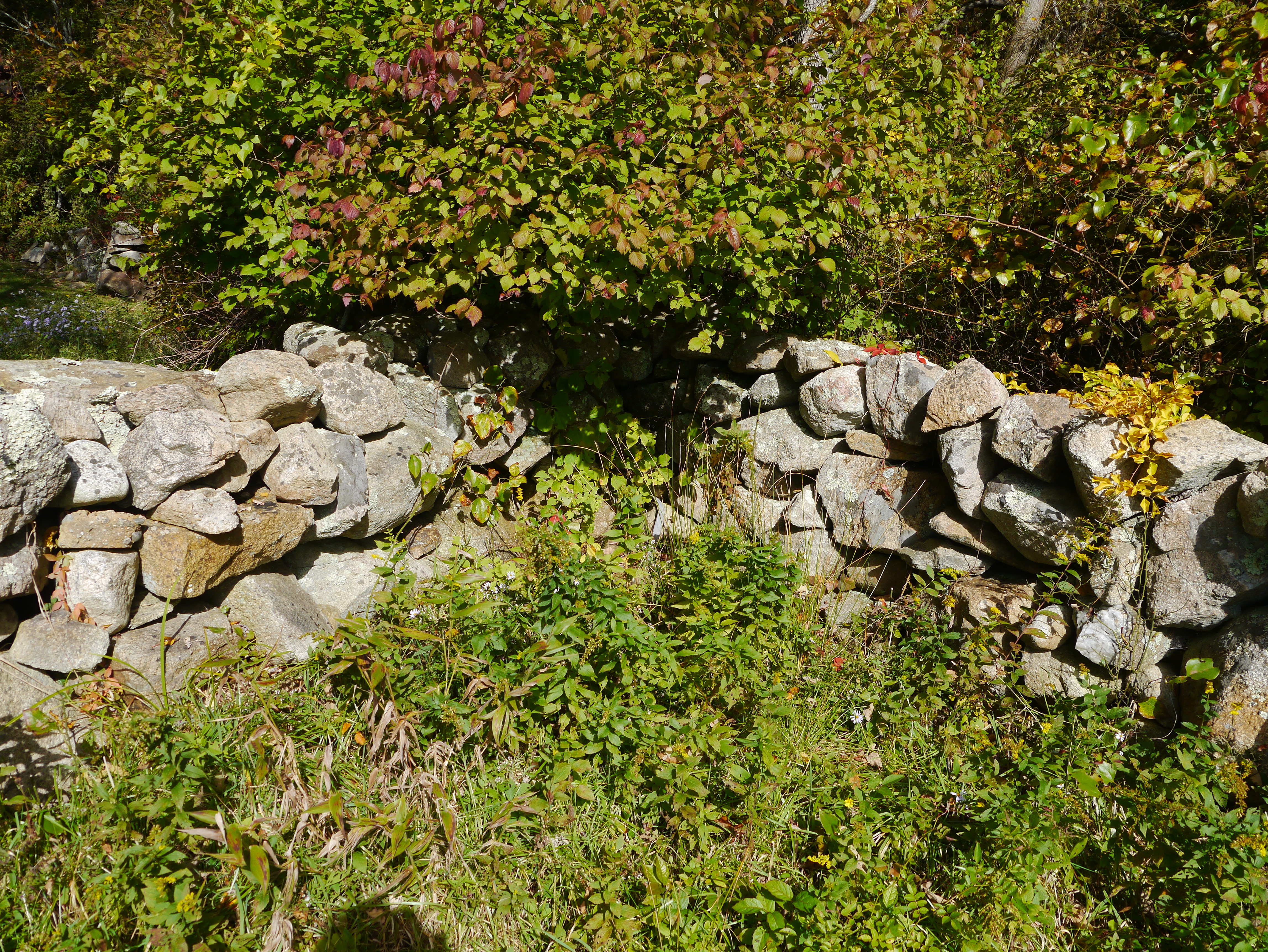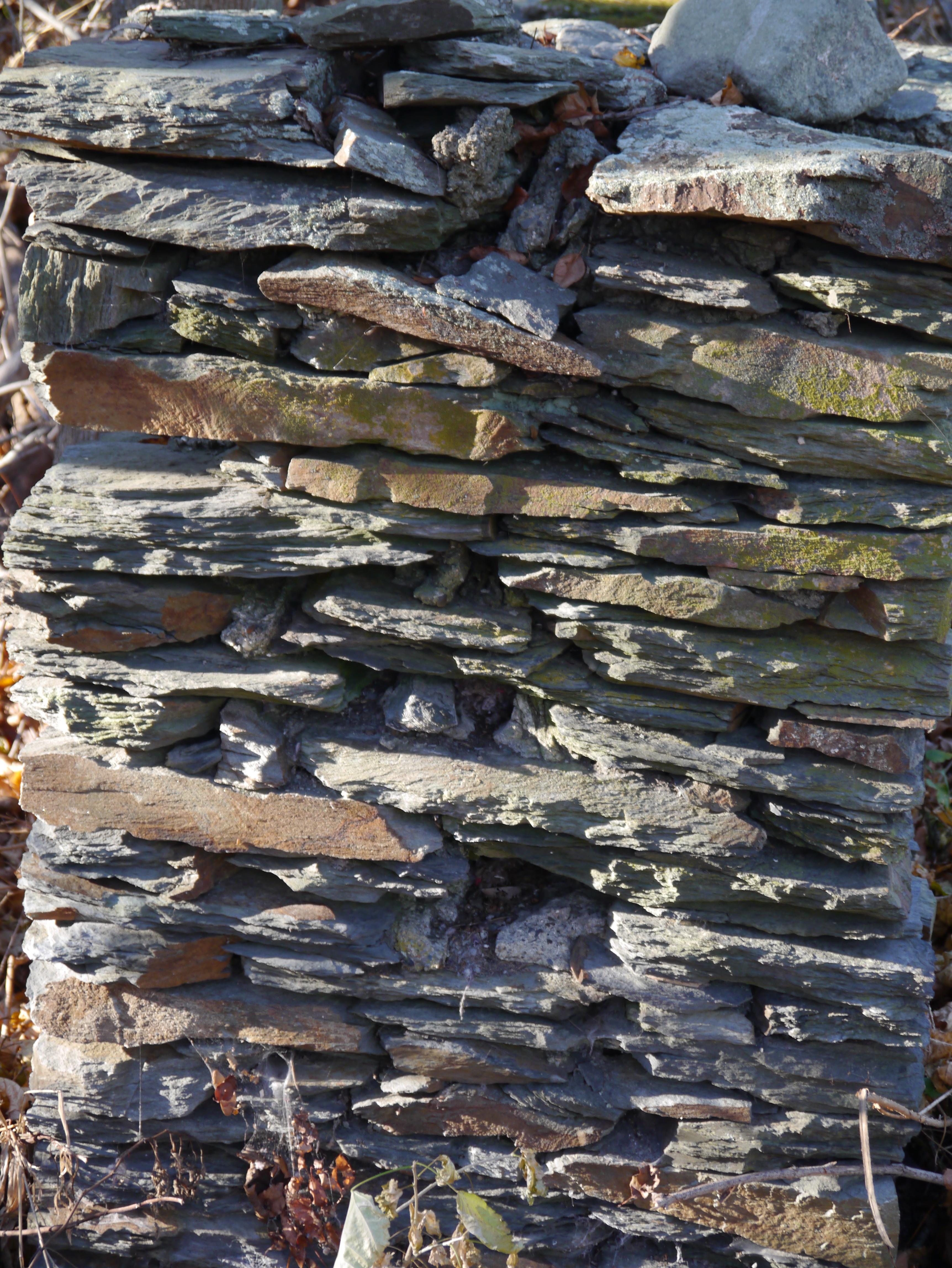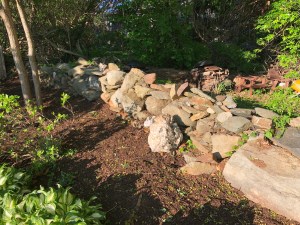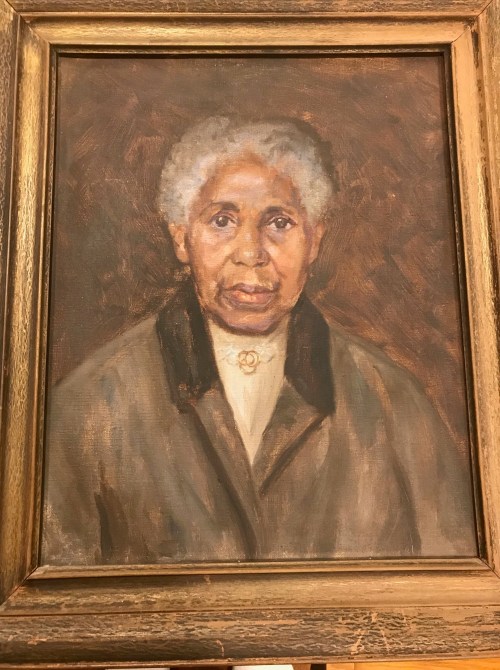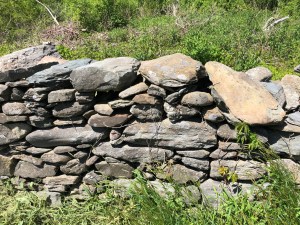 Stone walls are history we can touch. They remind us of our farming history and show us the ancient property boundaries. We are blessed with so many stone walls in our town that we often don’t notice them. Worse, we often don’t treat the walls with the respect they deserve as part of our heritage. The Aquidneck Island Stone Wall Initiative, a collaboration of the Preservation Society of Newport County and Preserve Rhode Island, is attempting to raise awareness of the need to preserve and rebuild our historic walls. They have restored a wall by Simmons Farms and are now working on a wall owned by Norman Bird Sanctuary at the corner of Paradise and Third Beach Road. On the way to the beach today, I stopped and took some photos of the process of rebuilding a wall.
Stone walls are history we can touch. They remind us of our farming history and show us the ancient property boundaries. We are blessed with so many stone walls in our town that we often don’t notice them. Worse, we often don’t treat the walls with the respect they deserve as part of our heritage. The Aquidneck Island Stone Wall Initiative, a collaboration of the Preservation Society of Newport County and Preserve Rhode Island, is attempting to raise awareness of the need to preserve and rebuild our historic walls. They have restored a wall by Simmons Farms and are now working on a wall owned by Norman Bird Sanctuary at the corner of Paradise and Third Beach Road. On the way to the beach today, I stopped and took some photos of the process of rebuilding a wall.
The Aquidneck Island Stone Wall Initiative has posted online a wonderful resource on island stone walls and barns. The HISTORIC RESOURCE REPORT BY JENNIFER ROBINSON provides the text for the the steps in stone wall building below.
“First, the stone is sorted by size and type, and the largest stones are placed side-by-side in two rows (each stone positioned in an oblong direction) for the foundation.

Two sides of Wall
Strings and a frame are set in the ground to guide the slope of the wall faces and the level of the courses.
Next, the courses are laid, with each row of stone being laid simultaneously on each face; stones are positioned so that all joints, or spaces, are covered (i.e. a “one stone on two, two stones on one”).
Hearting, or small filling stones, are utilized throughout for stability, and are added in the middle of the two wall faces as each course is being built.
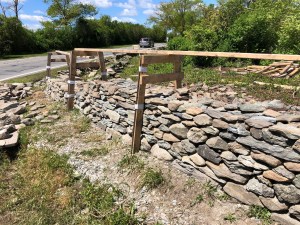
Adding through stones
As the wall increases in size (and above 23 inches), it becomes advisable to add regularly-placed throughstones; these long stones, which run across both wall faces, provide additional stability.
Finally, slab-like copestones are added across the top of the finished wall to provide a “binding” effect to
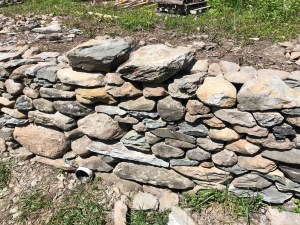
Capstones go on last
the structure.”
Read Ms Robinson whole resource booklet online: https://www.aquidneckstonewalls.org/resources




